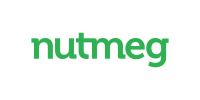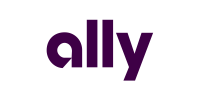Introduction
Wealthfront is one of the most popular robo-advisors on the market right now, for a variety of different reasons. The lows fees and hands-off investment approach is very attractive among passive investors right now. Established in 2008, Wealthfront has a strong investment methodology, and investors are required to fill out a questionnaire to gauge their risk tolerance. Funds are then allocated to exchange traded funds (‘ETFs’) and dynamically rebalanced when an asset class has moved away from its target allocation. Wealthfront offers a suite of free financial tools, even to users who are not signed up.
Overall Rating
Pros
-
Low fees
At 0.25%, management fees are ultra-low with this robo-advisor. Fund fees are between 0.07%. and 0.16%. No commission fees.
-
Robust investment strategy
Award-winning Ph.D. research team behind the personalized, diversified, and automated Wealthfront investment strategy.
-
Tax benefits
Perfect for tax loss harvesting and other tax-related strategies.
-
High interest & line of credit
Wealthfront offers a high-interest rate (2.57%) for cash deposits and a line of credit for those with over $25,000 in the account.
Cons
-
No Human Advisors
As a pure robo-advisor, there is no dedicated account manager to get in touch with.
-
No fractional shares
Low net worth investors cannot invest small amounts in fractional shares.
Wealthfront offers one of the best tax harvesting strategies available, supported by a carefully crafted robo-investment model based on investor risk tolerances.
How Does Wealthfront Work?
Wealthfront deploys a research-backed methodology to allocate investors funds based on their individual risk tolerance. The best portfolios are identified using modern portfolio theory (MPT). The result is that funds are placed in low-cost passive exchange traded funds. The passive and safe approach is what ensures ultra-low fees, without taking undue risk.
For more risk-tolerant investors, the funds will be allocated to riskier portfolios. The entire process is automated and the portfolios are rebalanced to take advantage of dividend reinvestments and to make sure that it is reasonably diversified.
Commissions & Fees
At 0.25%, it is hard to beat this robo-advisor when it comes to the management fees. This is the same as many other robo-advisor services, such as Betterment. The reason the fees are so cheap is that the process is automated and no personal advisors are at hand. This is one reason why human financial advisory fees are so much higher. Wealthfront has no commissions and small fees for investment in its funds.

It is free to use the Wealthfront application up to $10,000. There are a number of online promotions that will add an additional $5,000, for free management of $15,000. Beginner investors can get started with Wealthfront for free before the figures start to get high. There are no hidden fees using the Wealthfront service.
Platform & Tools
There are few flaws to be found in the Wealthfront platform and the free tools available, though more sophisticated investors might find it a little limited. The investment process is as streamlined and automated as it can be, with little room for error. Wealthfront offers a free financial management tool known as “Path”. You can also plan for four major goals including retirement, homeownership, holidays, or college. You can tailor your portfolio allocation to meet your goals. Also available is a line of credit for customers with over $25,000 in their account. A credit check is not required for this facility and your credit score is not affected.
Mobile App
The Wealthfront mobile application is excellent for customers to view their portfolio on the move, and can be used to easily transfer funds between accounts. Unlike many other applications, it is easy to use and customers rarely report glitches or errors. You cannot use the application to adjust your risk tolerance score - for this, you need to log into the main site.
Overall, the application provides an easy way to observe the current financial situation. The mobile application can also be used to view the future financial projection of users, based on current expenditure and savings. This is useful for those who want to save for specific goals.
Deposits & Withdrawals
Wealthfront does not place any limit on the number of withdrawals and the maximum ACH transfer limit is $250,000 daily. However, there is a 5 day waiting period for new deposits, in order to comply with anti-money laundering (‘AML’) requirements. Withdrawals take between 1 - 3 business days, though they can take longer in certain cases.
To open an investment account, you need a minimum of $500. For cash accounts, there is a $1 minimum. To take advantage of the stock level tax-loss harvesting, the minimum investment is $100,000. To fund a Wealthfront account, you need to link a bank account. 529 college saving plans can be funded by checks. You can also roll over a 401k or employer-sponsored plan to the Wealthfront platform.
Customer Experience
Customers are satisfied with Wealthfront due to the passive and automated investment approach.There is no need to deal with an advisor through a phone call, and it can be done in under 10 minutes. It is an excellent way to invest in low-risk funds and grow wealth, without taking on undue stress or making major decisions. This is appealing to a large class of people. Customers can easily plan for homeownership, retirement, holidays, or college using the free tools on offer.

Customer Support
The customer support with Wealthfront is excellent, even though they do not offer dedicated advisors for personal investment advice. Despite this, they do offer high-quality customer service for any issues that arise. In many ways, it is the best blend of automated services and human response. The algorithms do most of the work, but there is a superb customer service team at hand if you run into any problems.
Security & Reliability
Wealthfront is a fully regulated investment advisor. Two-factor authentication can be enabled to add an extra layer of security. Wealthfront securities are SIPC insured up to $500,000 and they only invest in SIPC covered securities. Wealthfront does not engage in proprietary trading with customer funds. Wealthfront only executes trades on behalf of client accounts.
Customer accounts are FDIC insured up to $1,000,000. This is four times the insurance provided by banks, which is $250,000. A joint Wealthfront account can be insured up to $2,000,000. Wealthfront is a secure platform that is regulated and insured. Wealthfront does not store your password and they deploy bank-grade security measures.






